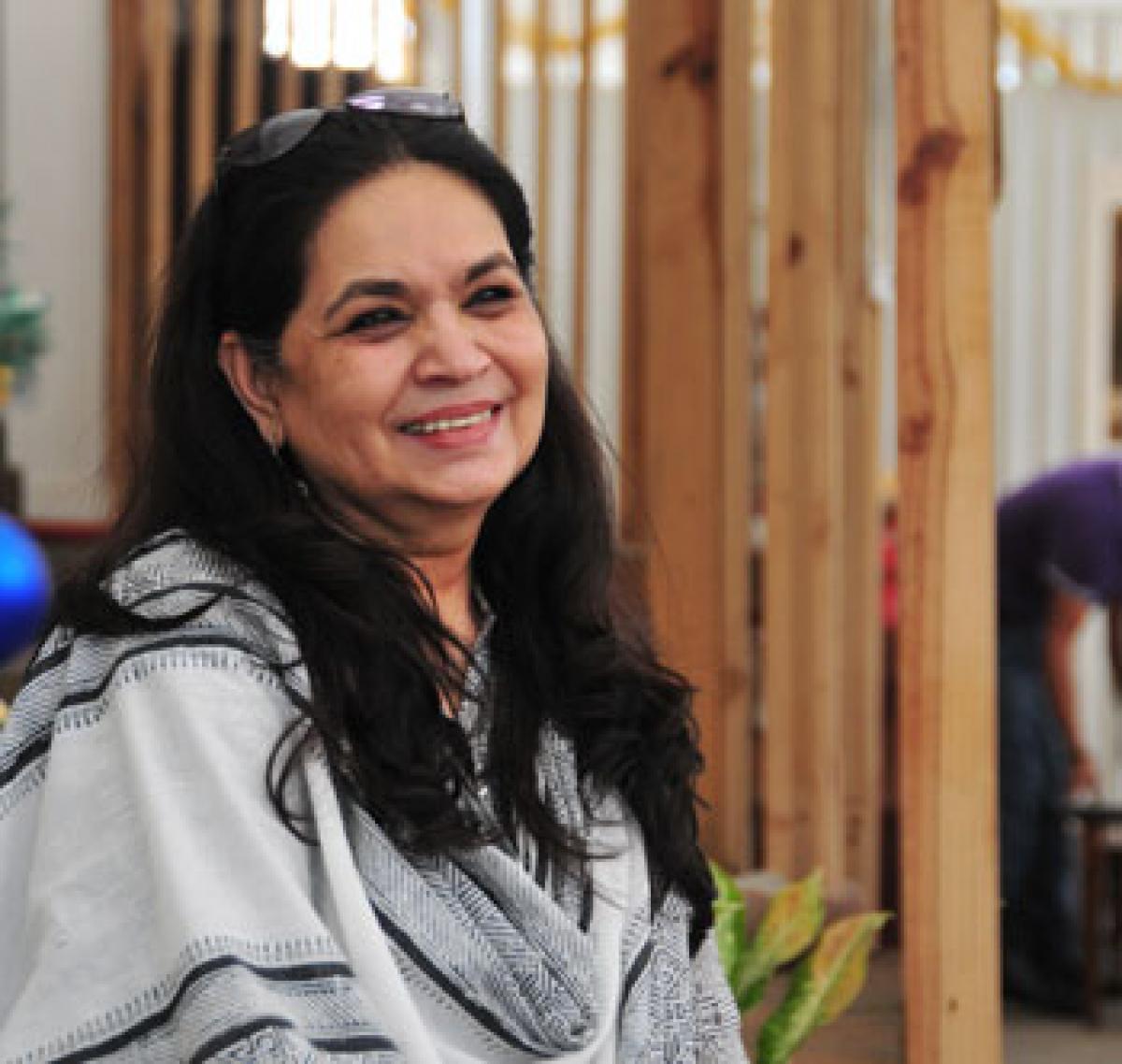Live
- Saibaba students advance to National Science Exhibition
- DCA raids unlicensed medical shops, seizes drugs
- Cong-BJP spar over Sidda’s 'horse trading' charge
- Ruckus over arrest of social media activists
- Cops intensify probe
- Uphold prestige of Assembly: Pawan
- Children are nation's future, says Revanth
- SC junks plea to ban WhatsApp
- RRR elected Assembly Dy Speaker unopposed
- Cong wants separate Constitution in J&K
Just In

Boundless vistas, large boulders, greenery all around, dances of the Banjarans in their colourful mirrored ghagras and ivory bangles in the neighbourhood, the Qutb Shahi tombs we would visit with family, the Golconda fort where my mother would relive stories from her childhood, the sight of the red soil wet with rain and the fragrance of the Molsri tree
 Karachi-based Noorjehan Bilgrami left Hyderabad when she was nine. The nostalgic artist has recreated her memories in her paintings titled ‘Under the Molsri Tree’ on display at Kalakriti Art Gallery
Karachi-based Noorjehan Bilgrami left Hyderabad when she was nine. The nostalgic artist has recreated her memories in her paintings titled ‘Under the Molsri Tree’ on display at Kalakriti Art Gallery
“Boundless vistas, large boulders, greenery all around, dances of the Banjarans in their colourful mirrored ghagras and ivory bangles in the neighbourhood, the Qutb Shahi tombs we would visit with family, the Golconda fort where my mother would relive stories from her childhood, the sight of the red soil wet with rain and the fragrance of the Molsri tree – these are the memories of Hyderabad etched deep within me,” shares Noorjehan Bilgrami, an artist from Karachi, textile designer and researcher.
Noorjehan is in the city of her birth, a place she retreats to, in quest of peace and a city that has remained only in her memories, to inaugurate an exhibition of her recent works, ‘Under the Molsri Tree’. “I left the city when I was 9-year-old. Now, I am from Karachi, which is so different from this city. I at least have my family here, and so, I keep coming back,” says Noorjehan.
“But now, there is a sense of loss. I go around to record and document anything left from what I see fresh in my memories, and there’s nothing left. This too has changed,” she adds.
The city has changed not just for Noorjehan, who left it when she was just a child, but scores of others from the city of Nizam, who have seen it change drastically in front of their eyes. And her paintings – works of collage where she used old photographs in sepia prints, some recreated in archival etching, painted upon with acrylic, grids dividing the space, creating a sense of time taking us back and forth, the drawings of the Molsri leaves and lines resembling the unique stitch on a lambada garment, the arches of the Qutb Shahi tombs, the images of the Golconda fort, the textures of the exquisite textiles, and the vision of a city that has changed forever – elicit a feeling of nostalgia and a longing for the time that is long gone.
“My daughter lives in Edinburgh and she was doing a documentary on my grandfather, who was a surgeon in Edinburgh. When she was interviewing ammi, and we were looking at this family album - that triggered my childhood and I felt like recreating them in my works. My works are always meditative and abstract in nature. They have a geometry and grid, which in addition to religious significance has an architectural relevance and is important to textiles too. My works allow you to wander into a depth and are about nature. ‘Molsri ke chaw mein’ is a body of work that has all these aspects.”
In addition to using pictures from old albums, she sourced photographs of Qutb Shahi tombs ad Golconda of which she used that took her back into the recesses of memory – like the beautiful arch of with a young girl standing that reminded Noorjehan of her friend with whom she would play during her childhood. Few of the photographs are of the Molsri tree in bloom from her garden.
“When I was working with ajrak prints, I went to this museum, parked my car and opened the door only to realise there was this heady scent that took me back to my days in Hyderabad. I looked under my feet and found the crushed flowers of Molsri. I didn’t realsie that I had parked my car down under this huge Molsiri tree. Back in childhood when the household would go silent, we children would gather under this Molsri tree and play all kinds of games. That fragrance never left me,” she recalls.
Looking around at her works being hung up on the walls of Kalakriti Art Gallery, which is incidentally located in the same Banjara Hills, where lie the treasure of Noorjehan’s memories, she says, “Here are bits of images that come to my mind when I close my eyes. It was important for me to recreate them in my work.”
By:Rajeshwari Kalyanam

© 2024 Hyderabad Media House Limited/The Hans India. All rights reserved. Powered by hocalwire.com







